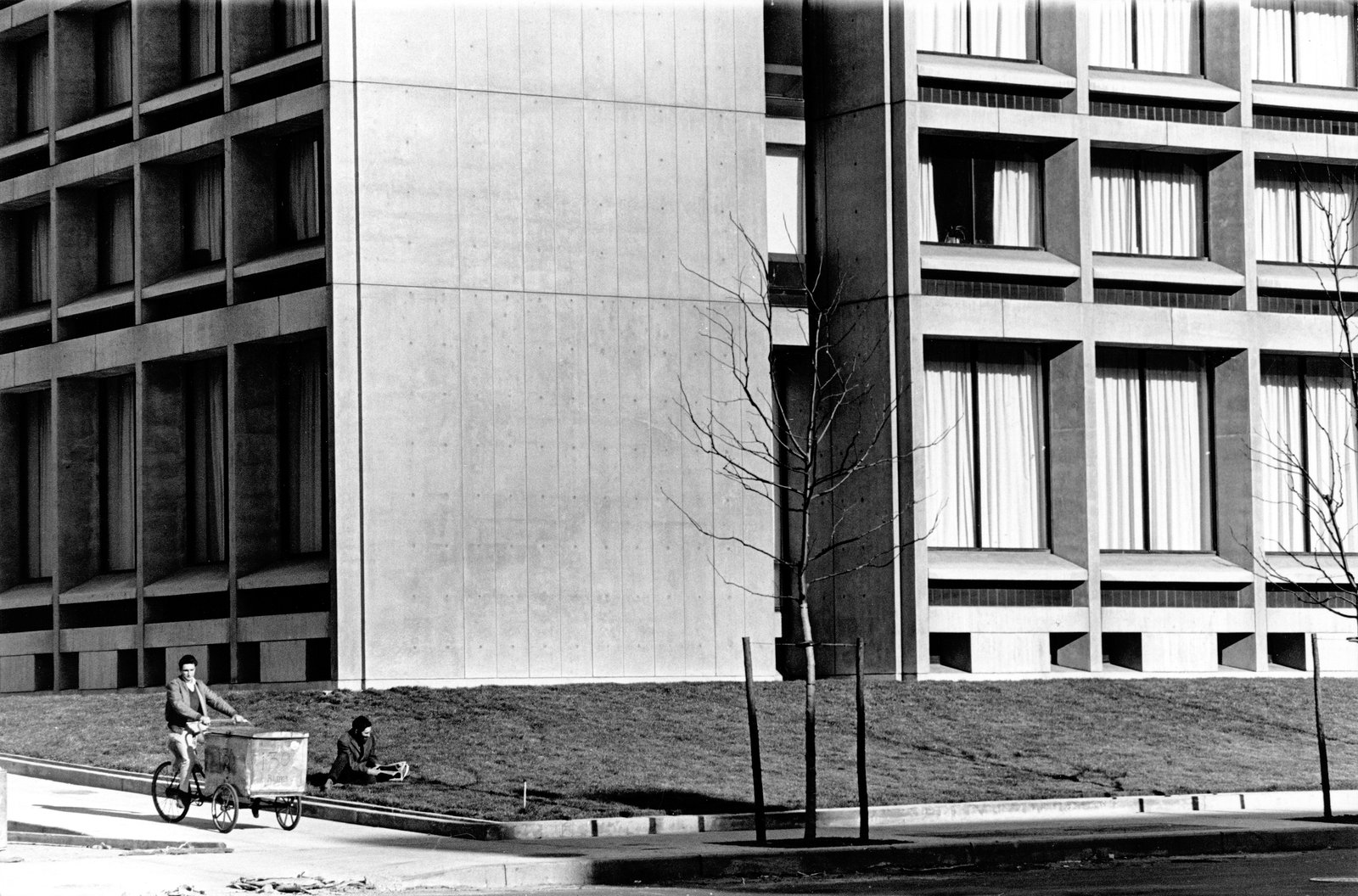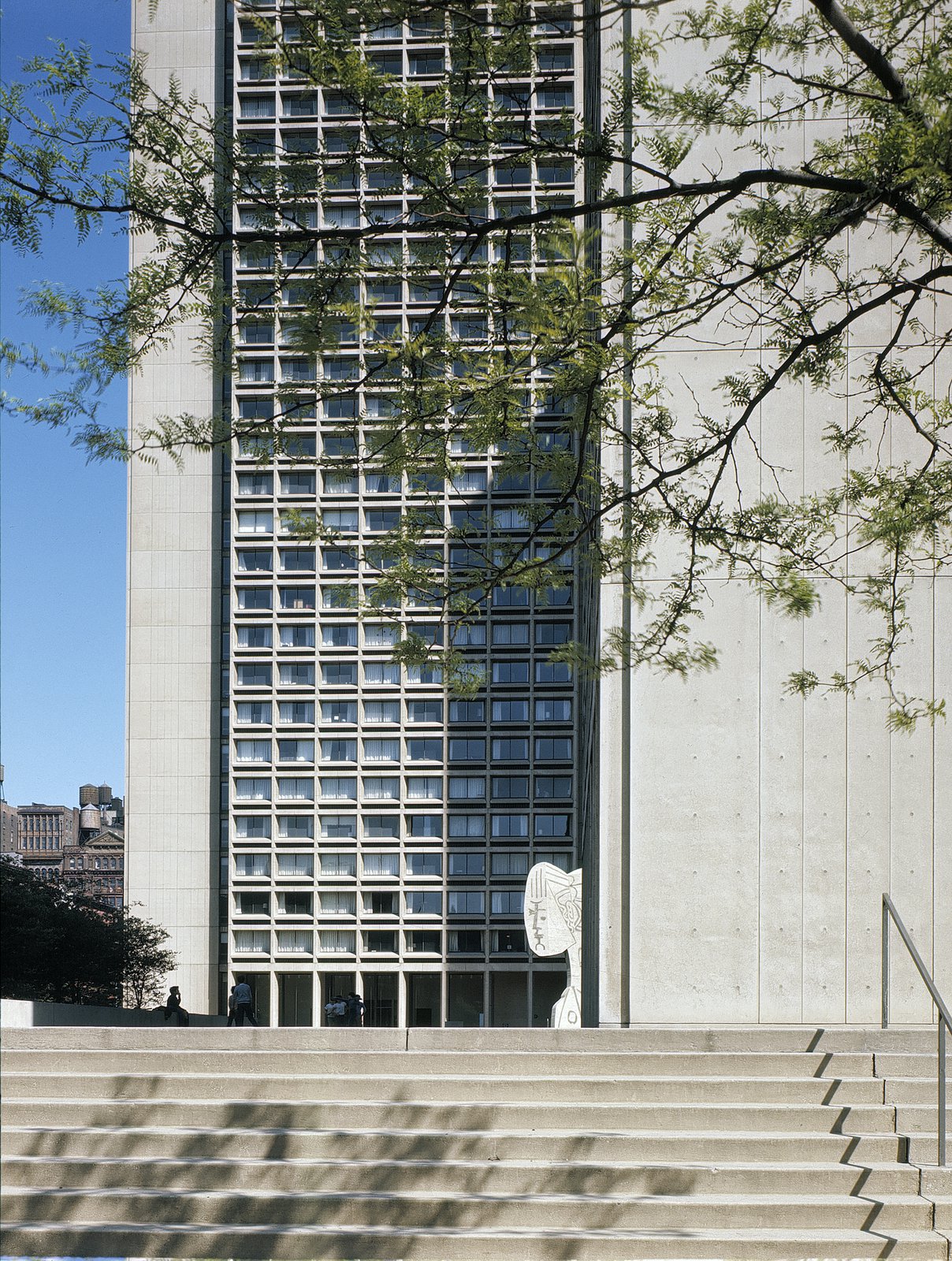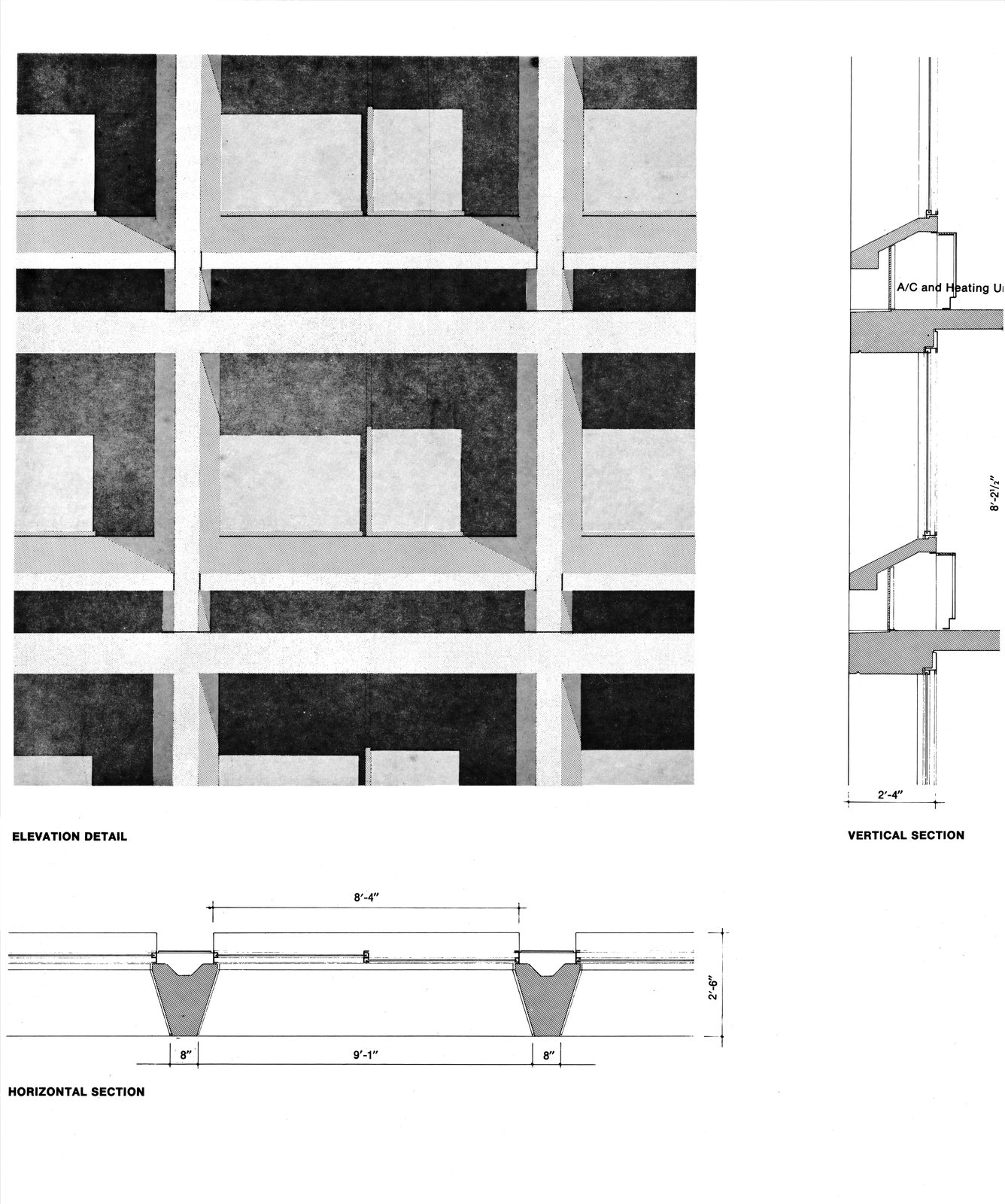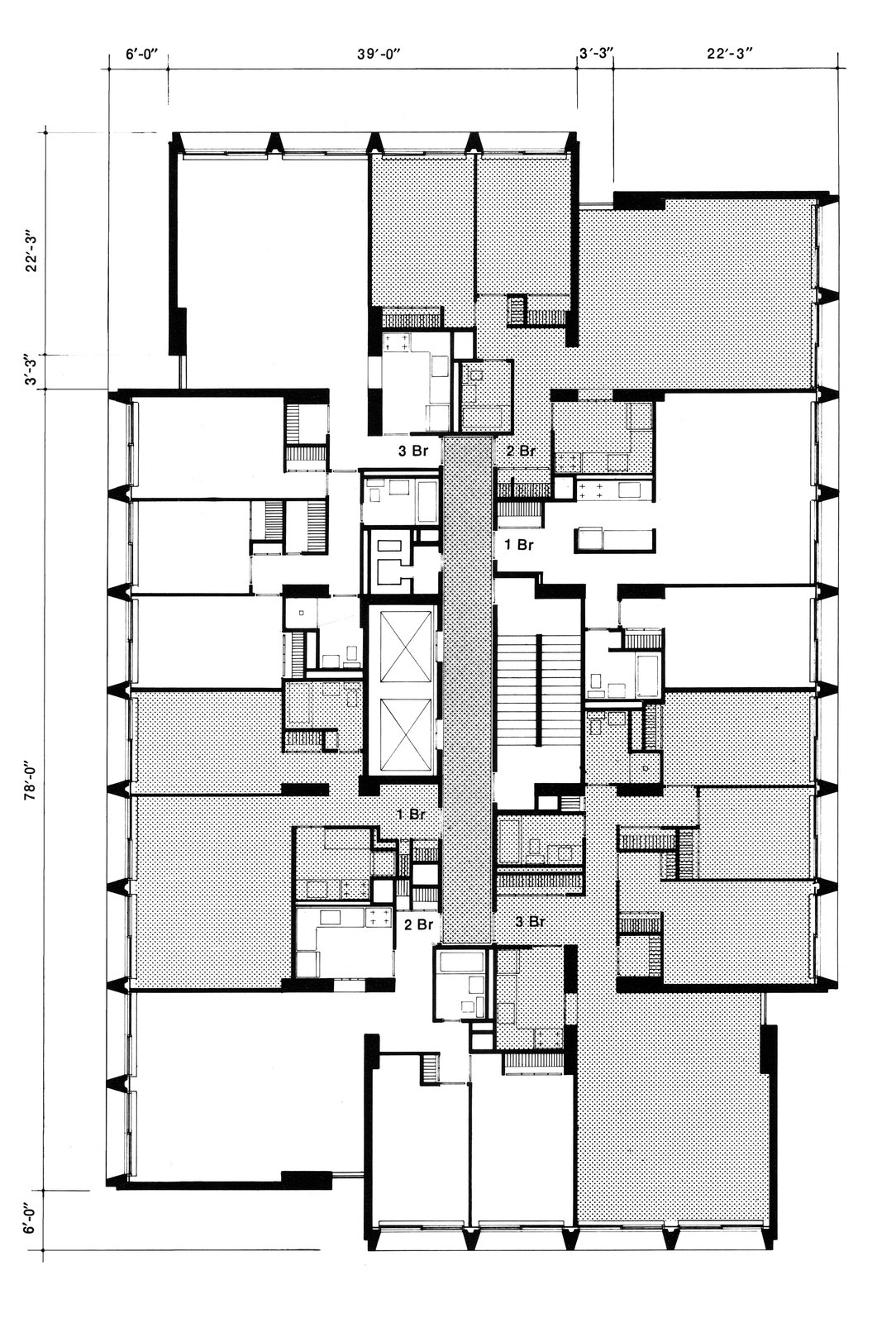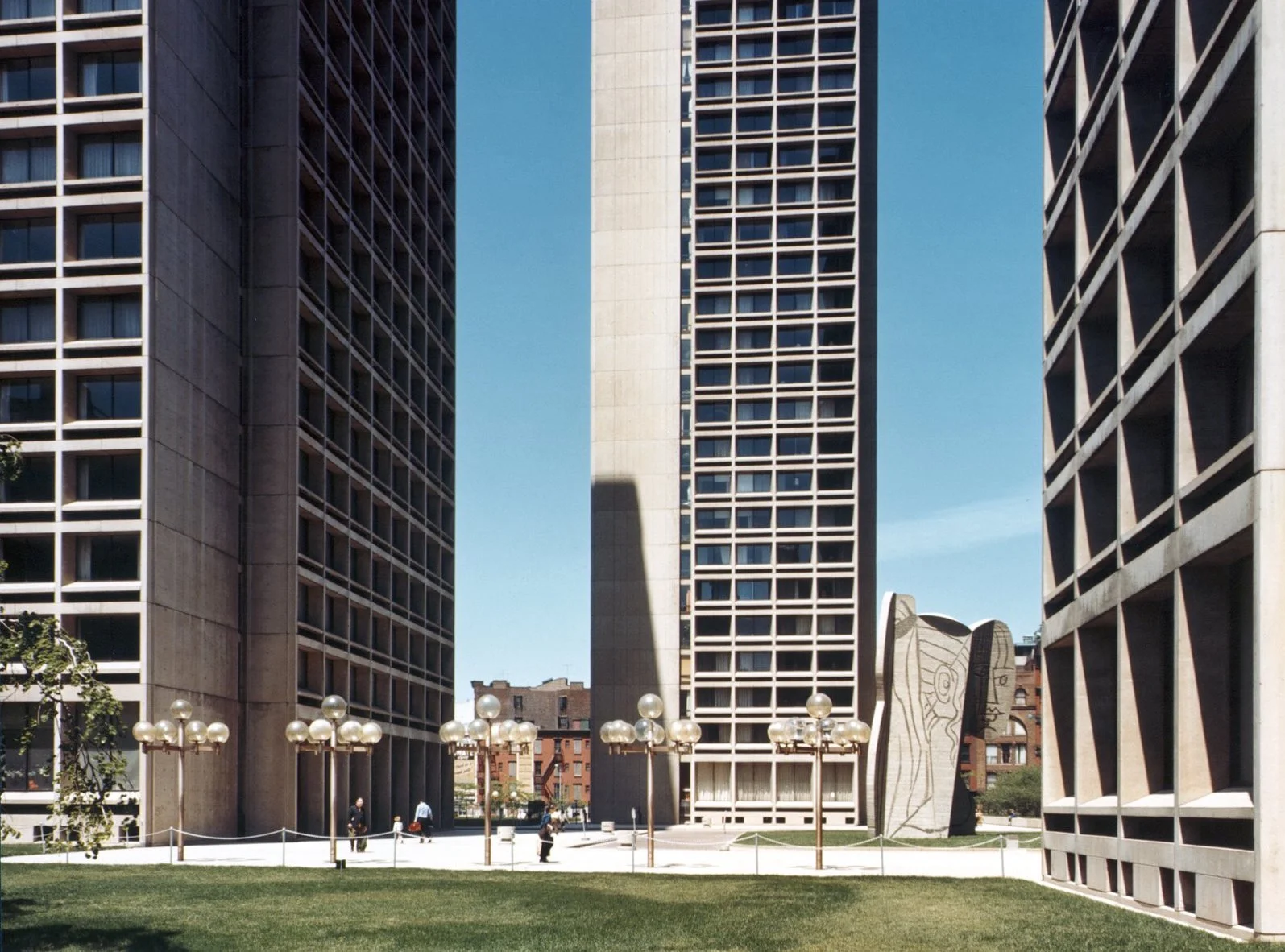UNIVERSITY VILLAGE (SILVER TOWERS)
Credit: PCF&P, George Cserna
University Village (Silver Towers)
Date: 1965
Architect: I.M. Pei & Associates
Address: 100 & 110 Bleeker, 505 LaGuardia Place
Use: Residential
New York University first developed land around Washington Square Park in 1833 when it constructed the gothic “Old University Building” on the park’s east side. At the end of the century the university planned to construct a more formal campus, developing the “Uptown Campus” in the Bronx, designed by Mckim Meade and White. Following World War II, NYU began to increase its presence around Washington Square Park, abandoning plans to further develop its Uptown Campus. During this time, they began to purchase individual parcels of property around the park and Greenwich Village neighborhood, resulting in opposition from the surrounding community who worried the university planned to make the park part of the campus. With the passing of the National Housing Act in 1949, NYU was able to seize property south of park with the help of the city’s Slum Clearance Committee and its chair Robert Moses. Nine city blocks south of the park were included in the subsequent Washington Square Southeast Renewal Area, with the blocks bordering the park designated for educational use including Bobst Library, the blocks between West 3rd and Bleeker developed for the middle-income housing Washington Square Village and the southernmost site between Bleeker and Houston devoted to housing NYU faculty and their families with the agreement that one-third of the units would be designated middle-income housing under the Mitchell-Lama program for people who lived or worked in the area. First preference for the new units would go to families that previously lived on the site and were displaced by the construction.
Named University Village, NYU selected I.M Pei & Associates to design the southernmost site bordered by Houston, West Broadway (now LaGuardia) Bleeker and Greene Streets. The firm was already working on two other residential developments at the time; Kips Bay Plaza in Manhattan’s Kips Bay neighborhood and Society Hill in Philadelphia, which both resembled University Village in material, scale and layout.
Architect James Ingo Freed of I. M. Pei & Associates would build on these two projects, going through multiple schemes of varying heights, sizes before settling on three identical 30-story towers centered around a 100-by-100 foot lawn.
The three towers have matching gridded facades, with four or eight deep-set window bays on each floor, surrounded by a 22-foot-wide blank concrete sheer wall. The buildings were arranged to maximize views of the area and positioned away from the surrounding streets for safety and noise dampening. The site was also slightly elevated, creating a ten-foot raised platform at Houston Street, creating a barrier between the busy thoroughfare and apartment towers.
In his projects from the late fifties and early sixties, Pei’s preferred material was concrete; all three housing developments from this time period use a smooth exposed concrete. As the Landmark’s designation report describes, “at University Village, load-bearing walls were poured on site to create column-free interior. A warm, buff-colored concrete was selected for University Village, comparable, depending on the light, to sandstone or limestone. At Chatham Towers (Kelly & Gruzen, with Mario J. Romanach, 1965-66) in Chinatown, architects used plywood boards to form the exposed concrete, producing a rough and yet interesting patterned surface. At University Village, however, fiberglass molds were employed… fiberglass is easy to assemble, strip, and re-use. Furthermore, various concrete coatings, release agents, and even scaffoldings were evaluated.”
Construction commenced in August 1964 and by the end of the year the first tower had topped out. All three were completed by early 1967. In the central courtyard between the towers is a 36-foot sculpture, “Bust of Sylvette.” Pei had originally wanted the sculpture in Silver Towers' east side predecessor, Kips Bay Plaza, but had to sacrifice it for landscaping. When the University Village commission came around, Pei contacted Picasso who “received a block model of the entire scheme and confirmed Pei's choice of size and position” then had his partner Carl Nësjar sandblast the 36-foot Sylvette from 60 tons of concrete. (Architecture Plus) Picasso assisted with the design of the sculpture and its placement in the plaza.
Silver Towers was designated a historic landmark along with Sylvette in 2008. Two years after the landmark designation NYU proposed constructing a fourth tower on the site, blocking the view of Sylvette from Bleecker Street, but neighborhood opposition caused NYU to drop the proposal.
Sources:
University Village Designation Report. Landmarks Preservation Commission.
University Plaza New York University. Pei Cobb Freed & Partners.
Architecture Plus. March, 1973.

